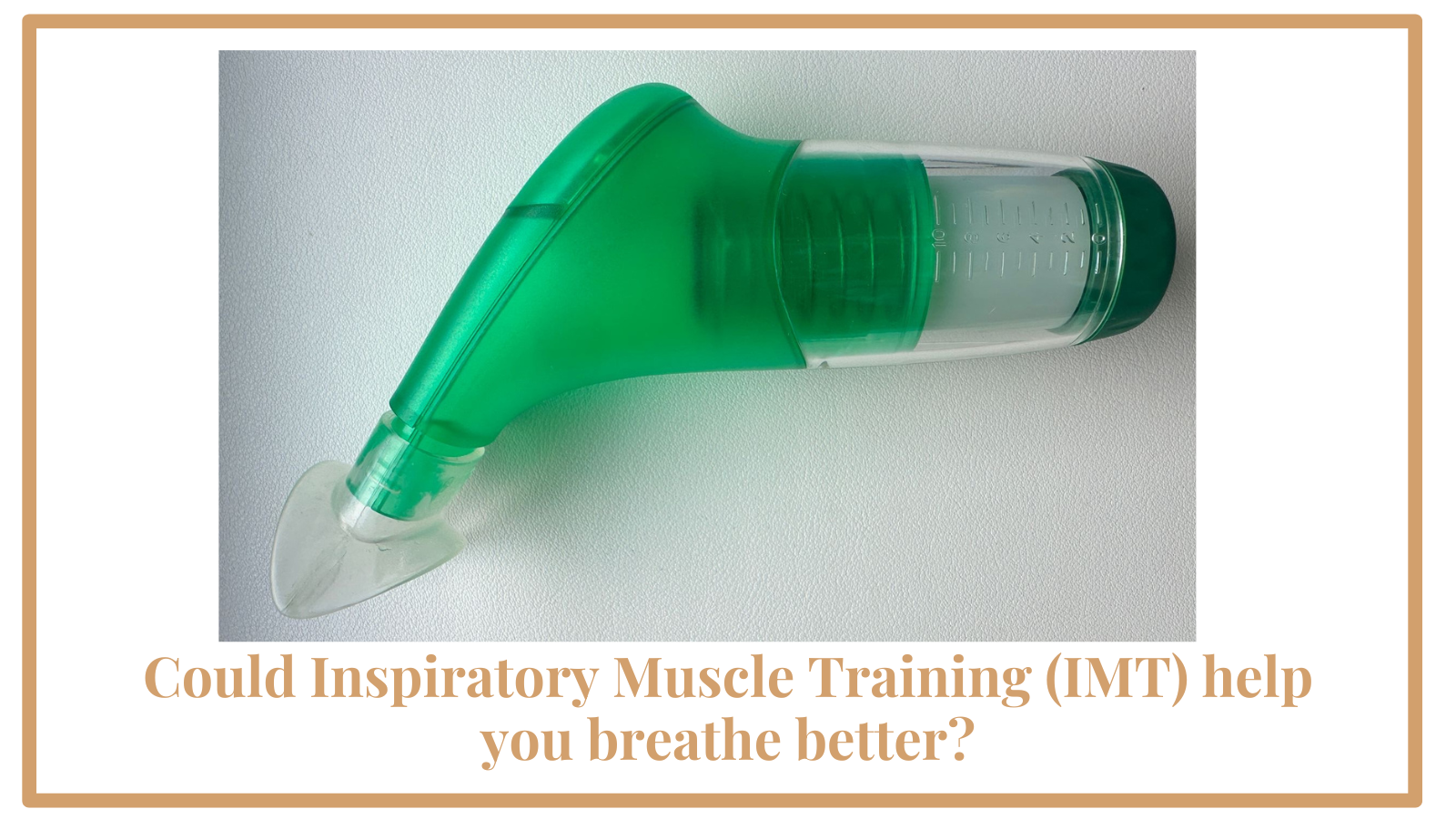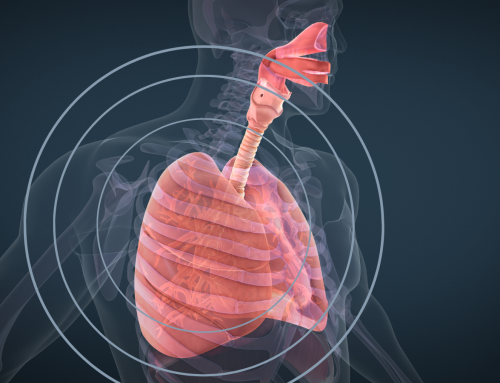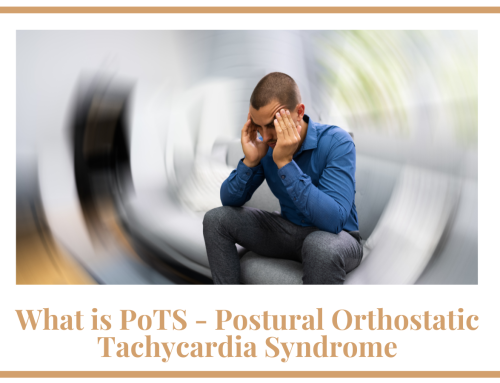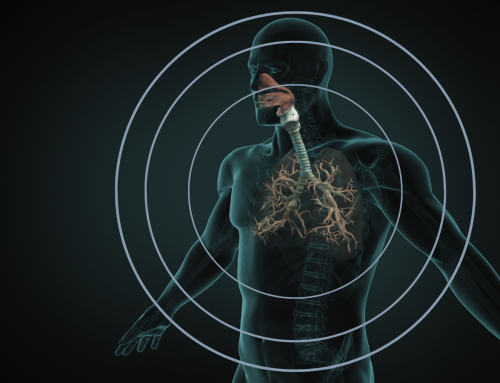|
|||||||||||||||||||||

From: Helen Hughes <helenhughesmarketing@gmail.
Date: Tue, 29 Jul 2025 at 15:59
Subject: IMT blog
To: Emily Lockwood <emily@airphysiotherapy.co.uk>

Could Inspiratory Muscle Training (IMT) Help You Breathe Better?
Living with a chronic lung condition such as COPD often means struggling with breathlessness, fatigue, and limited activity. For many, long-term oxygen therapy adds an extra layer of concern when it comes to exercising safely. Inspiratory Muscle Training (IMT) is a targeted approach designed to strengthen the muscles involved in inhalation, particularly the diaphragm. By improving breathing mechanics and boosting diaphragmatic strength, IMT can help reduce breathlessness and improve exercise tolerance.
IMT and Breathing Pattern Disorders (BPD)
IMT can be especially valuable for individuals recovering from Breathing Pattern Disorders (BPD), especially those aiming to return to physical activity. In BPD, the diaphragm often becomes weak and underused, while smaller, less efficient muscles in the neck and upper chest take over. This compensation leads to a form of “deconditioning,” where the diaphragm becomes less responsive and struggles during physical exertion.
However, before beginning IMT, it’s essential to correct poor breathing patterns. If you start training with dysfunctional breathing mechanics, you risk reinforcing the use of the smaller, less efficient muscles, rather than targeting the diaphragm.
Once a healthy, diaphragmatic breathing pattern is re-established, IMT can be used to build strength where it truly matters.
How IMT Works
Like any other muscle, the diaphragm becomes stronger with resistance training. Since you can’t attach weights to it, we use a handheld device called an inspiratory muscle trainer to create resistance during inhalation. Think of it as strength training for your lungs.
The device challenges your diaphragm by making it work harder to draw air in. Training typically involves breathing against a set resistance which is often determined by your maximal inspiratory pressure (MIP), measured by a healthcare professional. A common program includes 30 breaths, twice a day, over a six-week period, followed by a maintenance phase. As your breathing muscles adapt, the resistance is gradually increased.
What Are the Benefits of IMT?
- Stronger breathing muscles: Improves strength and endurance of the diaphragm and other inspiratory muscles, leading to more efficient breathing.
- Improved breathing mechanics: Encourages a better technique alongside breathing pattern re-training, helping you develop a more effective, controlled breathing pattern.
- Better physical performance: Increases exercise tolerance, delays fatigue, and enhances overall activity levels.
- Reduced breathlessness: Significantly eases feelings of breathlessness, particularly during exertion (as seen on the MRC breathlessness scale).
- Improved lung function: Leads to measurable improvements in lung performance, including higher maximal inspiratory pressure (MIP).
- Enhanced cardiopulmonary response: Can positively affect heart rate and blood pressure, especially in individuals with heart failure.
- Improved quality of life: By increasing respiratory efficiency and physical capability, IMT helps make daily activities more manageable and enjoyable.
How Air Physiotherapy Can Support Your IMT Journey
At Air Physiotherapy, our specialist respiratory physiotherapists incorporate IMT into comprehensive, individualised treatment plans. Here’s what to expect:
- Tailored IMT Setup: Once your breathing pattern is optimised, we prescribe an appropriate resistance level and design a home training program, typically involving 30 breaths twice daily.
- Integrated Rehabilitation for Long-Term Conditions: IMT is combined with personalised cardiovascular and strength training, breathing exercises, airway clearance techniques, and pacing strategies—adapted to your condition and oxygen requirements.
- Ongoing Education & Support: We provide education on why respiratory muscles weaken, how IMT helps, and how to monitor for fatigue and technique issues during training.
We use advanced devices like the Powerbreathe trainer, which provides consistent resistance during every inhalation to effectively challenge and strengthen the diaphragm.
Who Can Benefit Most from IMT + respiratory physiotherapy?
IMT is particularly helpful for individuals who:
- Are recovering from BPD or EILO and aiming to resume exercise.
- Have severe COPD or restrictive lung diseases.
With a customised physiotherapy plan, IMT can help build stronger, more efficient breathing, making everyday activities like climbing stairs feel easier and more manageable.
Thinking About Trying IMT? Here Are Some Tips:
- Start with a consultation: IMT isn’t suitable for everyone. It’s crucial to consult with a qualified respiratory physiotherapist before beginning.
- Prioritise breathing pattern optimisation: A nasal, diaphragmatic breathing pattern is essential before starting IMT.
- Maintain clear lungs: If you’re prone to mucus buildup or chest infections, keeping your airways clear is key for effective training.
At Air Physiotherapy, we guide you through every step of the IMT process safely and effectively. Start small, progress steadily, and feel the difference in your breathing and overall well-being.
To begin your IMT journey or book a consultation, click here.






